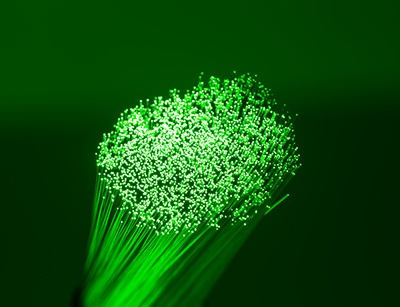 This week sees the 80th birthday of Sir Charles Kuen Kao, the pioneering electrical engineer who has been described as the Father of Fibre Optics and Godfather of Broadband. Joint winner of the Nobel Prize in Physics in 2009 for ‘groundbreaking achievements concerning the transmission of light in fibers for optical communication’, his work is seen as integral to the widespread use of fibre optics today.
This week sees the 80th birthday of Sir Charles Kuen Kao, the pioneering electrical engineer who has been described as the Father of Fibre Optics and Godfather of Broadband. Joint winner of the Nobel Prize in Physics in 2009 for ‘groundbreaking achievements concerning the transmission of light in fibers for optical communication’, his work is seen as integral to the widespread use of fibre optics today.
Born in China, he moved to the then British territory of Hong Kong in 1948 and then came to the UK, where he carried out much of his research at Standard Telecommunication Laboratories (STL) in Essex.
The idea of using light to transmit data is not new. In fact Alexander Graham Bell was the first in modern times to suggest that the modulation of light could be used for communication (he proposed a ‘photophone’). Trouble is he used free space optics which are useless on foggy days and over any reasonable distance. When lasers appeared in the early 1960s Kao realised they could be coupled to dielectric waveguides (which became optical fibres). The first fibres had terrible losses, of around 1000 dB/km, which meant they were far more inefficient than coaxial cables which had losses (in the electrical domain) of 5 to 10 dB/km.
Kao demonstrated that silica glass fibres could provide a high speed telecommunications technology, proving that these previous high light losses were down to impurities in the material, not its intrinsic properties. The results he presented to the IEE in 1966 provide the ideas that underpin today’s fibre optic networks.
At the time however the idea that these glass fibres could replace copper were disbelieved by many. So Kao travelled to the US and Japan to explain his concept and help commercialise the idea, improving the manufacture of glass fibres to ensure they achieved the right levels of purity. Due to Kao’s insight fibres with losses below 5 dB/km appeared in the 1970s and we are now down to below 0.5 dB/km on singlemode fibres.
As well as further development of fibre technologies, he was also involved in promoting submarine cables and in total was granted over 30 patents. Following stints at companies and higher education institutions including ITT, Yale, the Chinese University of Hong Kong and Transtech Services, he now lives in the United States.
Today we very much take the speed and capacity of fibre optic networks for granted, but without the work of Kao and the people around him the world we live in would be a completely different place. High speed fibre broadband and ultra fast backbone data networks owe a significant debt to Kao’s research. And as fibre is deployed across the globe and within different markets such as automotive, aerospace and within smart homes this debt will grow.
Recognising Kao’s achievements (and the vital importance of fibre), the Fibre to the Home Council Europe (FTTH Europe) and its counterparts around the world, celebrated his birthday on 4th November with Gimme Fibre Day. This showcases how fibre has positively impacted communities across the globe and how it is changing the world around us.
At PPC we’ve always focused on innovation, and in our small way hope to continue Sir Charles Kuen Kao’s legacy with our work in protecting fibre cable. Our R&D centre is just 60 miles from the original STL site where fibre optics first began and we’re equally committed to accelerating fibre uptake. We’ve been granted over 80 patents to date around the globe for our pushable protective fibre cable technology, and average three new applications every year.
Fibre optics is now a thriving, fast moving global industry and we’re delighted to be playing our part in its progress. But as Sir Charles Kao turns 80, it is right that we all stop and remember his work – true research that has changed the world we live in.


